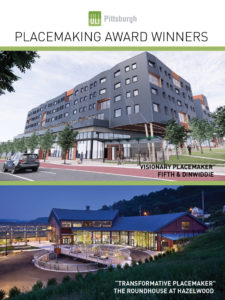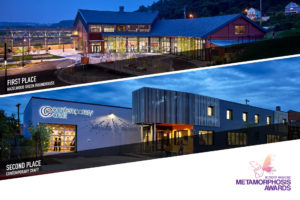Industrial Past Meets Sustainable Future
Almono LP & OneValley, The Roundhouse at Hazelwood Green
←
To Workplace
Pittsburgh, PA | 25,000 SF
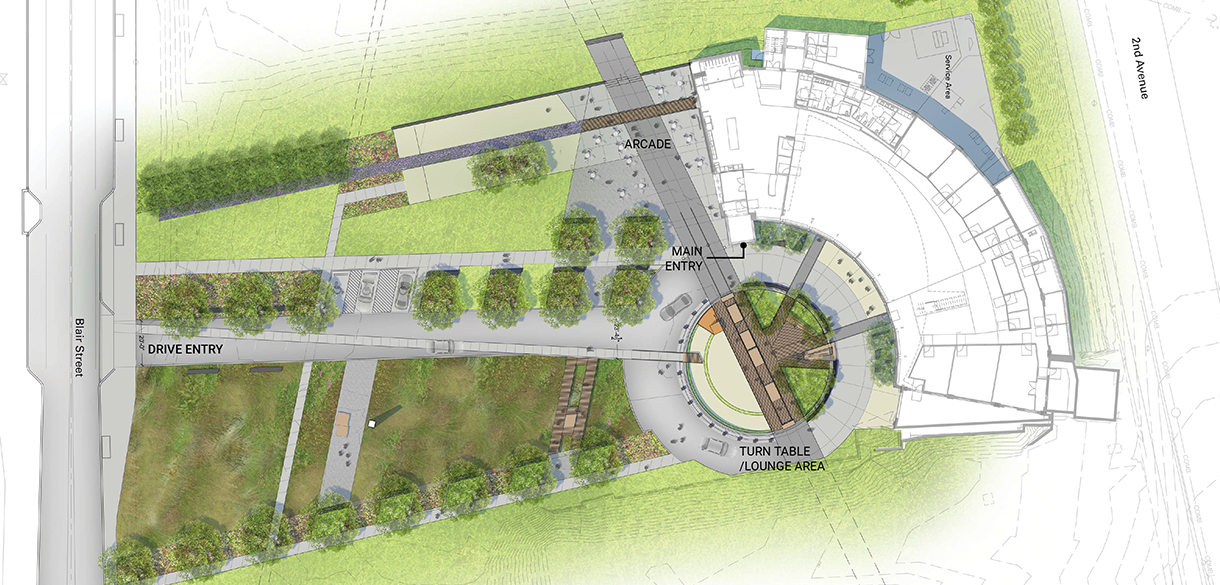 The site design integrates the roundhouse and its industrial relics into a rehabilitated brownfield along the Monongahela River.
The site design integrates the roundhouse and its industrial relics into a rehabilitated brownfield along the Monongahela River.
Part of the shuttered, 178-acre J & L Steel Mill, the 10-bay roundhouse originally serviced and turned train engines, redirecting the materials they carried to different stops in the production process. Now, as a co-working space for technology accelerator OneValley, the roundhouse will not only speed the delivery of groundbreaking innovations, but it is elevating sustainable development in the Pittsburgh region. Seeking LEED Gold certification, the roundhouse was also the first project tracked against Pittsburgh’s new resiliency standards.
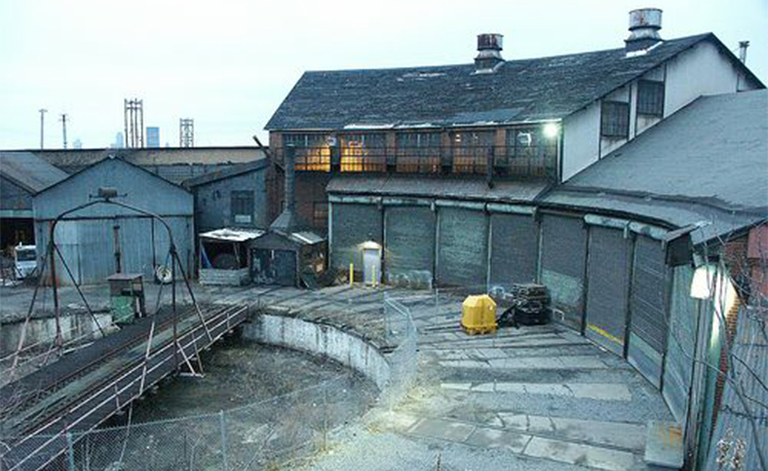 Existing dilapidated condition
Existing dilapidated condition
 Restored and reinterpreted for a new generation
Restored and reinterpreted for a new generation
Preserving this important piece of Pittsburgh’s past, the design uses a light touch to celebrate the existing structure while adapting it to a human scale. Partially built into a hillside, the roundhouse was a cavernous two-story space, darkened by decades of industrial use and abandonment, but the removal of a century of soot from the brick walls and underside of the pine roof deck warms the interior.
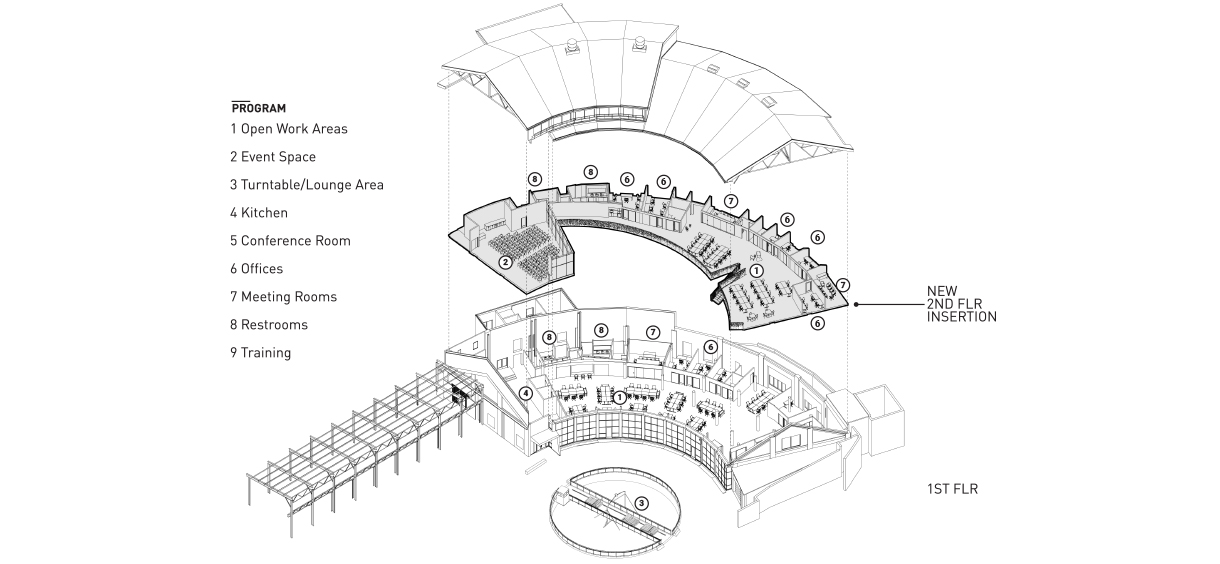 The insertion of a partial second floor expands usable office space and scales things down for human comfort.
The insertion of a partial second floor expands usable office space and scales things down for human comfort.
...a really well executed project...
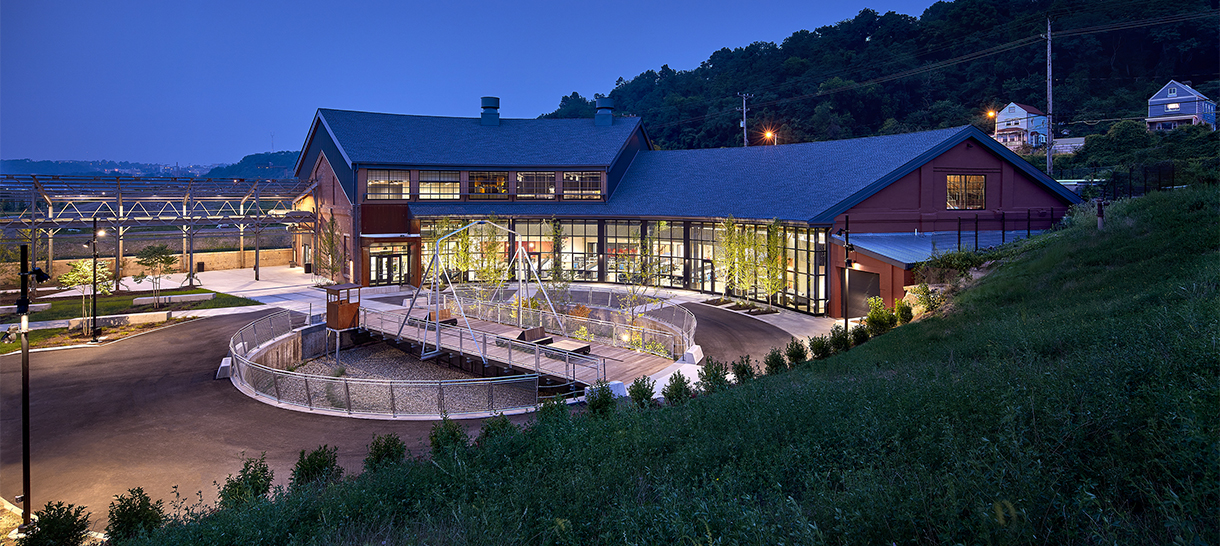
The addition of a partial second floor provides more office space (and a featured, glass-walled conference room) while also scaling the space down for its human inhabitants. At the same time, the removal of unnecessary walls and the replacement of its giant garage doors with windows enables occupants to appreciate the volume of this light-filled space.
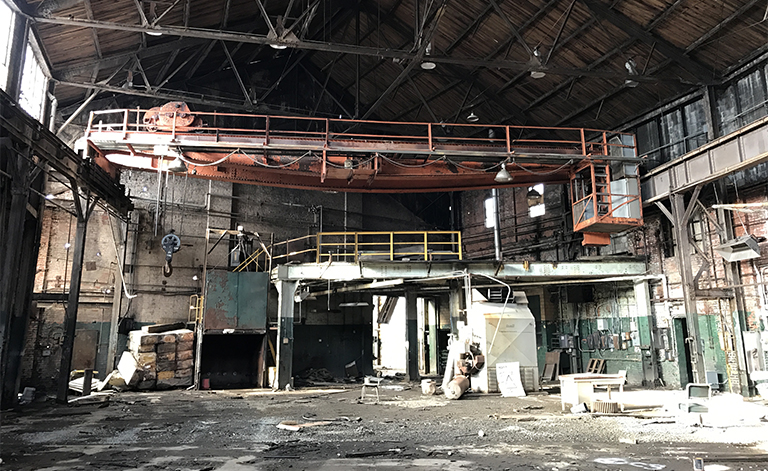 Dark and cavernous, the interior was a space for machines.
Dark and cavernous, the interior was a space for machines.
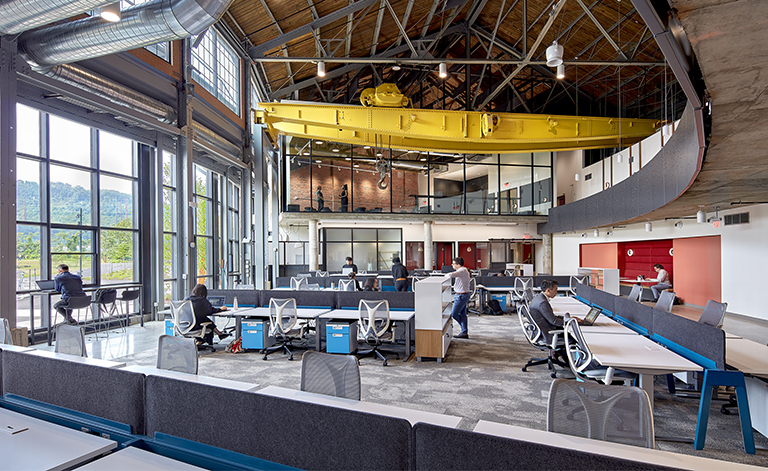 But its form, volume, and beautiful materials make it a compelling place for people.
But its form, volume, and beautiful materials make it a compelling place for people.
 The turntable, which once redirected trains, now offers a space for relaxation.
The turntable, which once redirected trains, now offers a space for relaxation.
The giant windows open to views outside, where a new public space uses native plants to integrate the site’s industrial remains—its turntable, the steel frame of an old shed—into the landscape of the Monongahela River.
-
Awards
-
News
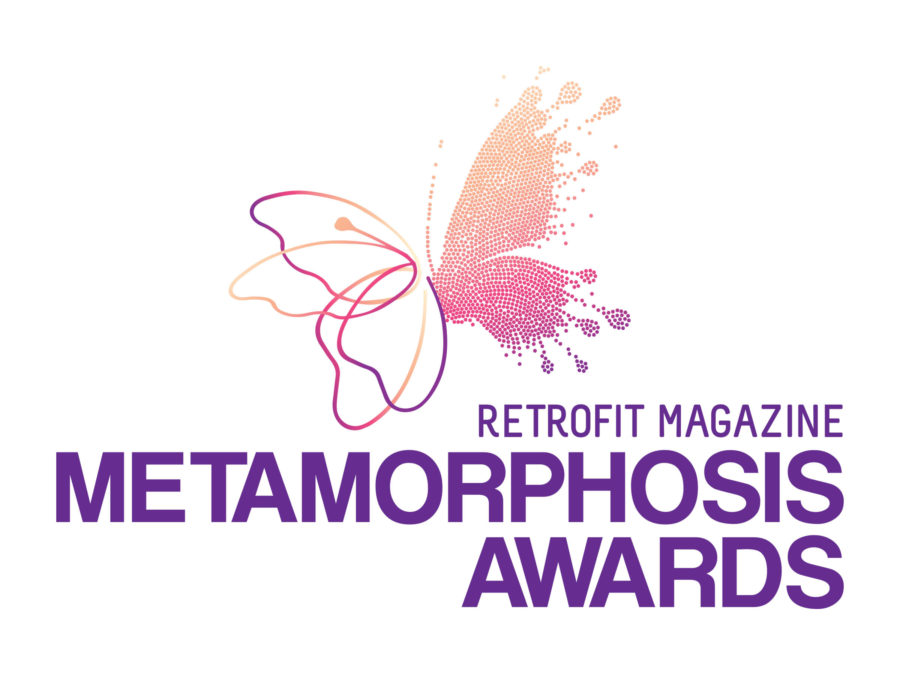
Retrofit Magazine, Metamorphosis Award, First Place, Adaptive Reuse

AIA Cincinnati, Architecture Merit Award





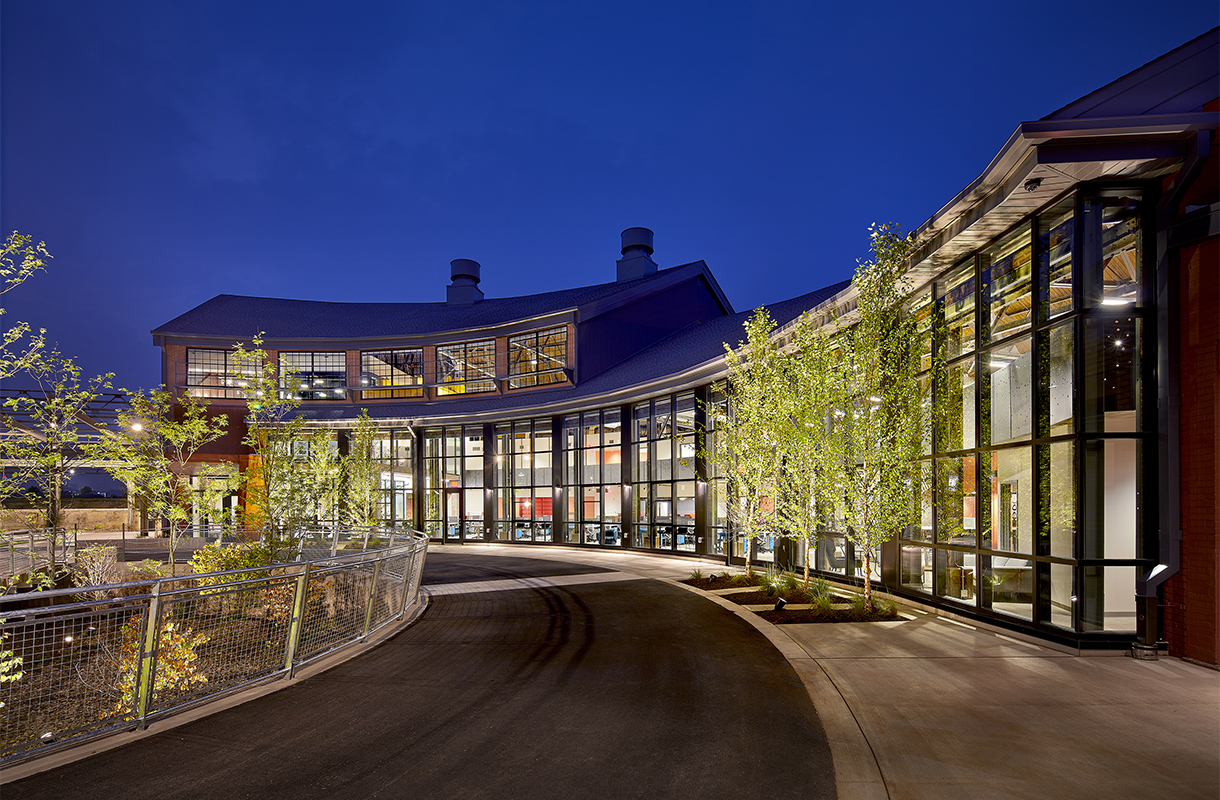 The Roundhouse at Hazelwood Green preserves Pittsburgh’s industrial past while creating a 21st Century workplace.
The Roundhouse at Hazelwood Green preserves Pittsburgh’s industrial past while creating a 21st Century workplace.
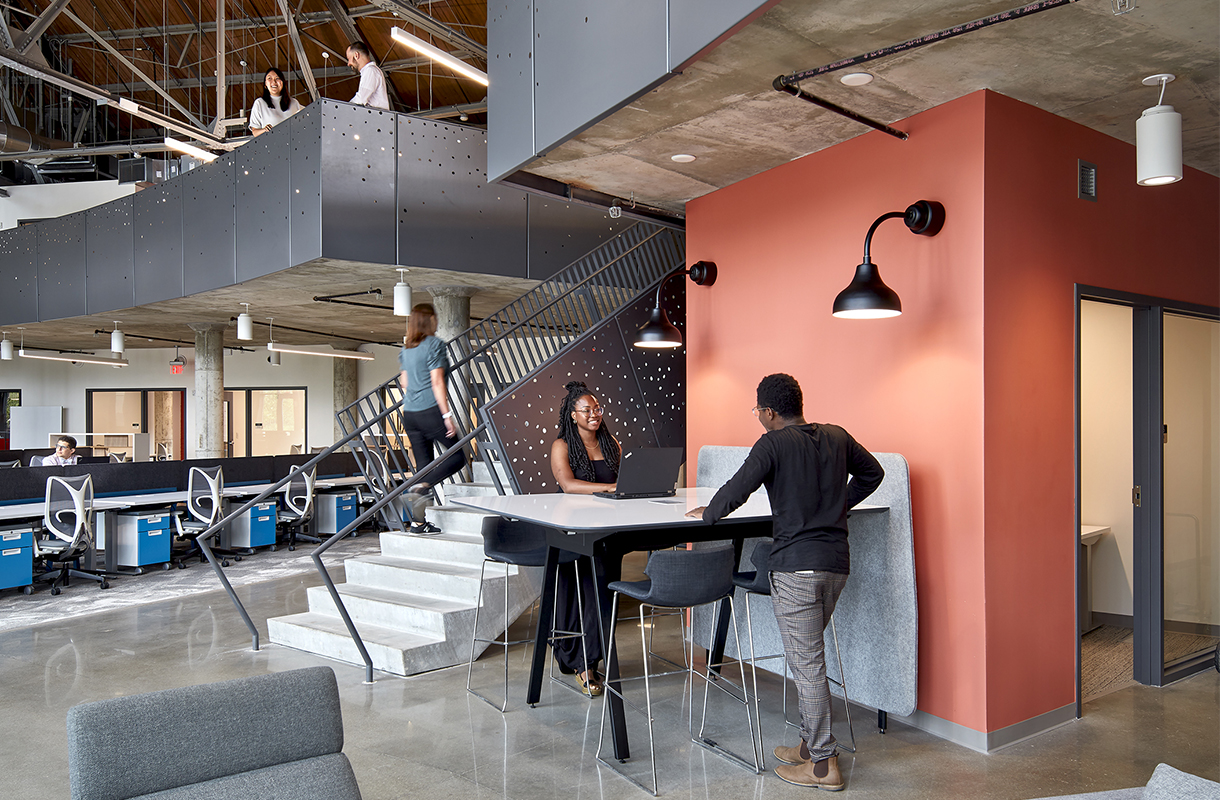 Varied spaces support different work postures.
Varied spaces support different work postures.
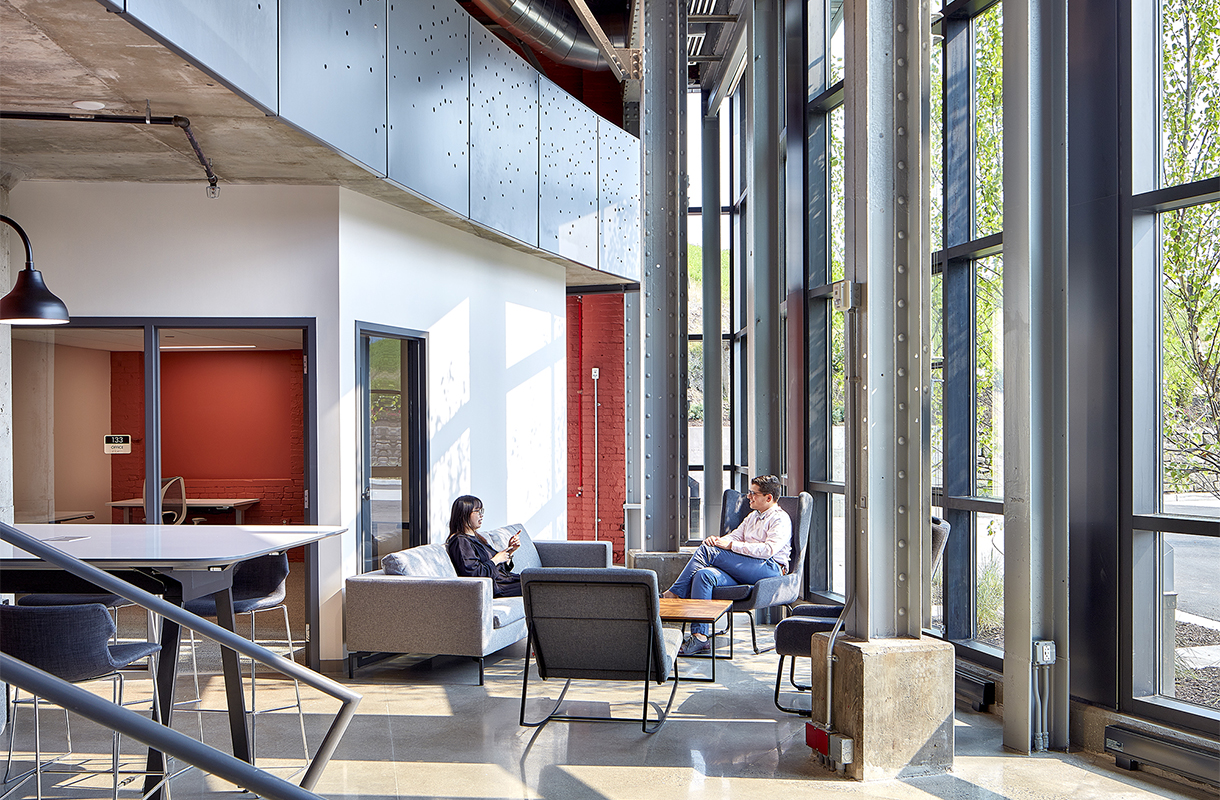 Relaxing spaces support the creative process.
Relaxing spaces support the creative process.
